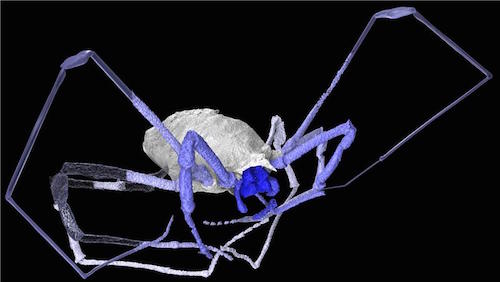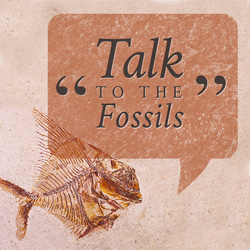 Evolution
Evolution
Devolution: Getting Back to the Simple Life

As we have seen already in this series, evolution can occur via horizontal gene transfer and epigenetics, both of which add information to a life form by non-Darwinian means — that is, not by natural selection acting on random mutation of the genome.
 The information added by epigenesis and horizontal gene transfer is not random. For example, assume that male parents’ alcoholism is consistently associated with disrupted patterns in children’s genes. The effects of excess alcohol, far from being random, are a predictable, law-like chain of chemical cause and effect. Similarly, bacteria don’t randomly share antibiotic resistance via horizontal gene transfer. Rapid development of resistance among whole colonies is a longstanding, law-like pattern that maintains a colony’s ecology, a pattern recently traced back to millennia before humans began to develop antibiotics.
The information added by epigenesis and horizontal gene transfer is not random. For example, assume that male parents’ alcoholism is consistently associated with disrupted patterns in children’s genes. The effects of excess alcohol, far from being random, are a predictable, law-like chain of chemical cause and effect. Similarly, bacteria don’t randomly share antibiotic resistance via horizontal gene transfer. Rapid development of resistance among whole colonies is a longstanding, law-like pattern that maintains a colony’s ecology, a pattern recently traced back to millennia before humans began to develop antibiotics.
Today, we often hear that these non-random mechanisms of evolution are consistent with Darwinian evolution (the Modern Synthesis). So, nothing has really changed after all!
Not so fast. Darwinian evolution (Darwinism) had better be consistent with all demonstrated mechanisms of change. Unlike horizontal gene transfer, it has proven difficult to witness, and proponents have relied largely on the assumption that it is “the only known theory that is in principle capable of explaining certain aspects of life.” What’s changed is that it can no longer be considered equivalent to “evolution.” It must compete with other known mechanisms.
Most of the time, when we think of evolution, we mean mechanisms for the growth of complex new information. After all, entropy (the tendency for disorder to increase over time) can satisfactorily explain loss of information. Yet, in the history of life, some forms survive while — or even by — losing information (devolution). Their history may tell us something useful too.
We all know devolution when we see it — a jar of pennies becomes a doorstop, a computer becomes a boat anchor, the XYZ volume of the Encyclopedia props up a too-short table leg.
But interest in devolution of life forms spiked with the recent discovery of giant viruses, which a 2014 editorial at The Scientist considered a possible fourth domain of life.
The giant mimivirus for example, unlike conventional viruses, “carries many genes thought to be unique to cellular life, suggesting that it evolved from a cell.”
If so, strictly speaking, it “devolved” from a cell. Information was lost, not gained. Perhaps the unicellular life form was unable to survive intact, but some remnant survives as a virus.
New Scientist announced in 2011 that, “World’s largest virus proves giants came from cells.” The idea is a reasonable one, though some, including National Geographic, now think that giant viruses preceded cells instead. We don’t really know as yet.
The viruses have, however, infected researchers with incorrect thoughts. A discoverer of a giant virus encased in ice for 30,000 years observed (2014):
“We thought it was a property of viruses that they pack DNA extremely tightly into the smallest particle possible, but this guy is 150 times less compacted than any bacteriophage [viruses that infect bacteria]. We don’t understand anything anymore!”
Didier Raoult, the discoverer of giant Marseillevirus said, provocatively, in 2009, “The idea of a common ancestor makes no sense in the light of viruses. That was Darwin’s idea, but he was clearly wrong.” Raoult, also the discoverer of the mimivirus (2003), considered “the most productive and influential microbiologist in France” according to Science, published a pop science book in 2011 that “flat-out declares that Darwin’s theory of evolution is wrong.”
Well, here are some things we can be reasonably sure of:
— Sometimes, devolution offers an apparent advantage. Many plankton microbes eliminated the genes for producing key vitamins, and now outsource the function. One account suggests, “… most of the time, the fitness advantages of smaller genomes and lower cell replicating costs offset the potential fitness gains that would come from vitamin manufacture when the required nutrients are in short supply.” Similarly, while functioning cell walls are thought to be critical to life forms, we are told that many bacteria can switch to a cell wall-deficient “L-form” state, “completely resistant to many antibiotics,” and possibly ignored by our immune systems.
— Similarly, some researchers believe that the Amanita mushroom group has devolved to a successful parasite on trees by losing the genes associated with breaking down cellulose. It’s possible that the Amanitas were crowded by ground-level competitors and devolution enabled them to exploit a new niche.
— Sometimes, however, the advantage is not clear. A brain part, the anterior sclerite, present in arthropods of 500 million years ago, is no longer extant. It is thought to be linked with bulbous eyes, but without further information, it’s impossible to say why it is apparently no longer required.
— Similarly, the Cambrian shrimp’s heart (520 mya) was more complex than the modern one: “The level of complexity of the Fuxianhuia was extremely high, considering that we are studying some of the oldest animals on Earth.” A 305-million-year-old harvestman (spiderlike arachnid) fossil has two sets of eyes (pictured above), but current descendants have one functional pair and one vestigial pair, apparently without suffering any adverse effect. But we would need to know much more than we do about the history of life to know why decreasing complexity was neutral or advantageous in each case.
— One devolved amphibian is visually almost indistinguishable from an earthworm. Similarly, a newly discovered blind, legless lizard is described as having “evolved to live underground,” though again, that should really be devolved.
— Sometimes a pattern emerges. A study that investigated evolution in nematode worms, including the strain that survived the 2003 Columbia space shuttle crash, shows that under artificially stressed lab conditions, the worms all lost the same gene.
In some cases, particular aspects of Darwinian evolution have proved false by discoveries of devolution. One Darwinian doctrine, called Dollo’s Law, formulated about 1890 by Belgian paleontologist Louis Dollo, states that a trait once lost cannot be regained.
No one seems to have told the life forms about it. For example, researchers were surprised to find one creature:
… in the aquifers beneath the Western Australian desert, which challenges the traditional Darwinian view of evolution. They have discovered that a species of blind predatory water beetles — living underground for millions of years — express vision genes (opsin) which are usually only found in species with eyes.
Losses can be reversed. Blind Mexican cavefish are considered an excellent model for studying evolution, with revealing results. In the lab, researchers have mated blind cave fish from separate and distant underwater caves and produced sighted offspring. Apparently, separate mutations had produced the blindness, and some hybrid offspring inherited a mix that includes enough genes for functioning sight. So no irrevocable devolution had taken place after all.
We are told that, with “dwindling evidence for the law-like nature of Dollo’s Law” opinions are reversing because “large genomics databases and evo-devo studies are showing how the underlying developmental pathways and genetic architecture can be retained after the loss of a character.”
Evolutionary biologists still have an odd relationship with devolution, to judge from items in Scientific American over the last two decades. First, we encounter obfuscation:
From a biological perspective, there is no such thing as devolution. All changes in the gene frequencies of populations — and quite often in the traits those genes influence — are by definition evolutionary changes.
…
Another misconception is that increasing complexity is the necessary outcome of evolution. In fact, decreasing complexity is common in the record of evolution. For example, the lower jaw in vertebrates shows decreasing complexity, as measured by the numbers of bones, from fish to reptiles to mammals. (Evolution adapted the extra jaw bones into ear bones.) Likewise, ancestral horses had several toes on each foot; modern horses have a single toe with a hoof.
This approach doesn’t quite make sense. It fudges the fact that loss and gain of information are not the same thing. Loss needs no explanation other than entropy; gain requires new sources of complex, specified information.
Even writers in the same publication seem to contradict themselves about the existence of devolution. In 2012, a Scientific American blog reported on a new study that argued humans are devolving so as to be dumber: “Homo (Sans) Sapiens: Is Dumb and Dumber Our Evolutionary Destiny?”
Gerald Crabtree, a biologist at Stanford University, has put forward a provocative hypothesis that our cushy modern existence — absent the ceaseless pressures of natural selection experienced during the Paleolithic — makes us susceptible to the slow creep of random genetic mutations in the 2,000 to 5,000 genes needed to ensure that our intellectual and emotional makeup remains intact.
Others, we were told, disagree with Crabtree: The social world we live in is complex, so “we haven’t in fact lost the selection process that kept the pressure on” to remain intelligent. But if Darwinian natural selection both produces high intelligence, and is needed to sustain it, why did it work only once, for humans? And does anyone really believe that social rejection today is the same as the life-and-death struggles of the Paleolithic?
In 2014, Scientific American, on a more serious note, informed us, with respect to those blind cave fish:
In the classic view of evolution, organisms undergo random genetic mutations, and nature selects for the most beneficial ones. A recent study in Science adds a twist to that theory: variability already present in a population’s genome may remain hidden in times of plenty but come unmasked in stressful situations, ready to help with adaptation.
This is, we are told, still “a topic of active research.” That is a good approach, better than insisting that traditional Darwinian concepts offer all the insight we need as long as we can cut the subject down to size. Because, one way or another, it’s just not Darwin’s evolution any more.
A variety of other non-Darwinian mechanisms of evolution may produce some change in some life forms, and we shall shortly give them each their turn in the spotlight.
Image: 305-million-year-old harvestman fossil via University of Manchester.
See the rest of the series to date at “Talk to the Fossils: Let’s See What They Say Back.”
